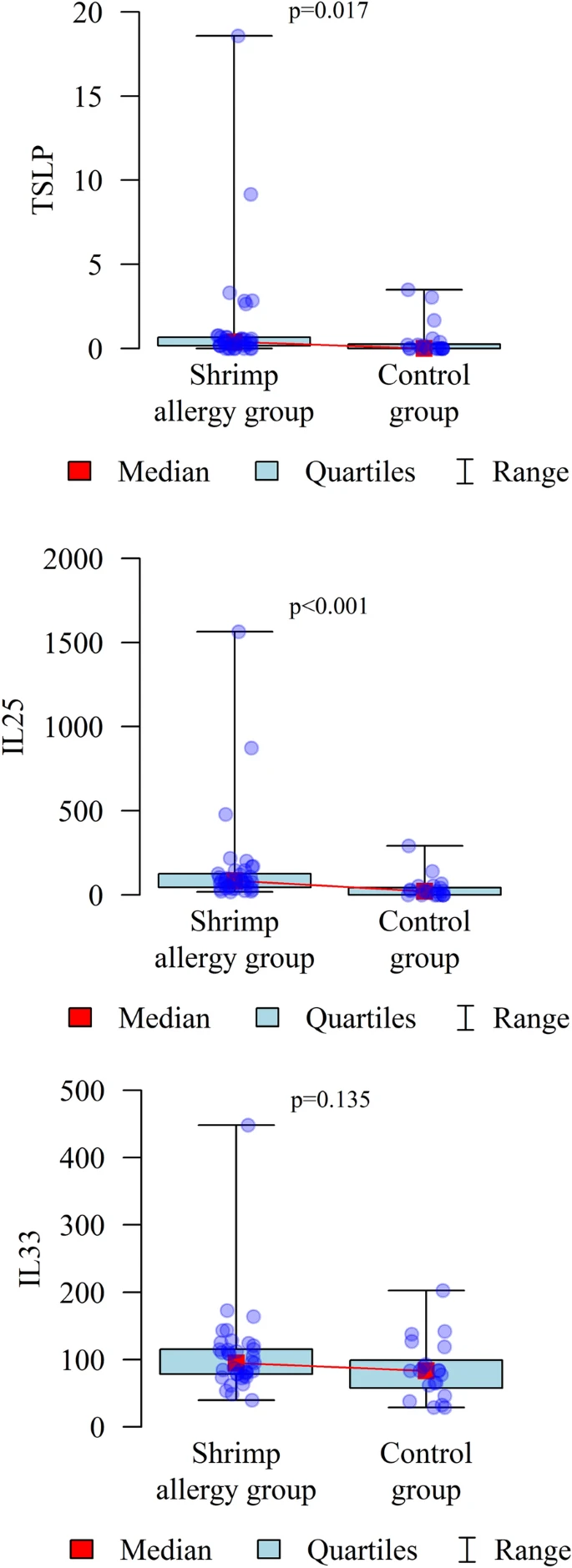- Research
- Open Access
Allergy, Asthma & Clinical Immunology 17, Article number: 76 (2021)
Shrimp allergy is a growing problem among the European population. TSLP, IL-25 and IL-33 are involved in the pathophysiology of allergic diseases, including asthma and atopic dermatitis, as they activate the Th2-dependent immune response.
Thirty-seven patients (18 male and 19 female) with a positive history of symptoms associated with shrimp consumption were selected. All patients had blood samples taken to assess the concentration of allergen-specific IgE (sIgE) to house dust mites (HDM) and shrimp (Singleplex, quantitative method with cut off value > 0,35 kAU/L) as well as the level of allergen components using the ImmunoCap ISAC method (Microarray test, semi-quantitative with cut off value > 0,3 ISU-E). The concentrations of TSLP, IL-25 and IL-33 in the patients’ blood serum was assessed using the ELISA method (Cusabio). Twenty patients with negative allergy history of allergic disease tests were included in the control group.
Among the 37 shrimp-allergic patients, ImmunoCap ISAC was identified the presence of sIgE to the available shrimp allergen components in only 14 cases (37.8%). TSLP and IL25 levels were significantly higher in the study group. No statistically significant correlation was found between the concentration of analyzed alarmins and the concentration of sIgE level to shrimp or HDM between the study and control groups. No statistically significant correlation was found between poly-sensitization occurring in patients and levels of TSLP, IL-25 and IL-33 .
In shrimp-allergic patients, the concentrations of TSLP and IL-25 were significantly higher than in the control group (1.33 vs. 0.49 and 157 vs. 39.36, respectively). There was no correlation between the concentrations of TSLP, IL-25 and IL-33 and the concentration of sIgE in the patients or the number of allergen components that the patients were sensitized to.

No comments:
Post a Comment